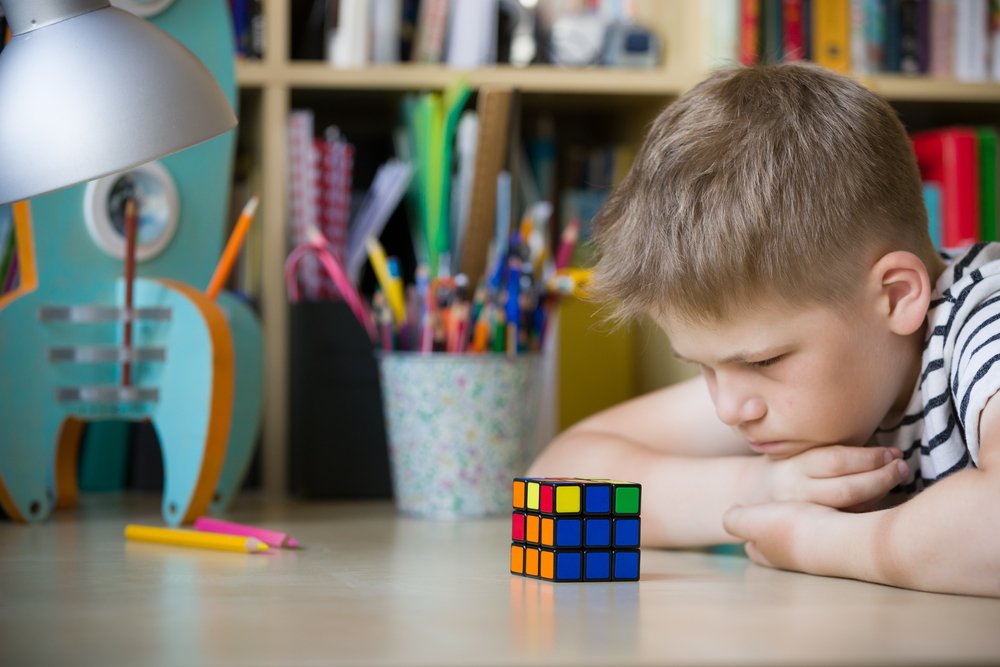Last Updated on January 25, 2024 by Gamesver Team and JC Franco

Rubik’s Cube is a 3D combination puzzle toy that was invented in 1974 by a Hungarian sculptor and professor of architecture, Ernő Rubik. Its original name was ‘Magic Cube.’ It’s a mechanical puzzle that earned global fame thanks to its unique characteristics.
In addition to being a fun brain training toy, the Cube has also been a subject of robust scientific research and was used in technology development by many scholars.
Rubik’s Cube is listed among the top one hundred most influential inventions of the 20th century. Considering its popularity and scope of influence, it’s easy to assume it’s without faults. But nothing is without flaws, and in this article, we explore several disadvantages and downsides of Rubik’s Cubes.
16 drawbacks and cons of Rubik’s Cubes:
1. They Can Be Noisy
Some Rubik’s Cubes are quite clanky and make a lot of noise, making them difficult to use in public without drawing attention to yourself. Its design and purpose make it a perfect fidget tool for long bus rides, waiting in lines, or killing time for the rest of your lunch break.
Still, it’s all worth very little when playing with it causes every pair of eyes in the vicinity to turn to you, especially when some of them are obviously annoyed by the noise you are making. Thankfully you can overcome this issue by purchasing a Cube of better quality.
2. They Are Often Poorly Designed
Poor design and production quality can not only make the Cube noisy, but they can also make it very sticky and difficult to move. This can slow you down quite a bit. It’s also a huge detriment if you wish to use your Cube competitively, be it against other people or your own time scores.
3. They Can Be Misplaced Easily
Lending your Cube to the wrong person can easily mean you never get to see it again and have to purchase a new one. They are also somewhat light, which makes them an easy item to lose around the house. For many, a Cube has been lost in one way or another. One can easily assume that more have been misplaced than have been solved.
4. They Are Not Cold-Friendly
We already mentioned how Rubik’s Cubes are great for entertainment when you’re out and about with some time to kill. Aside from being noisy, they can be used for this purpose when the weather is warm because as soon as your fingers get a little frosty, playing with the Cube is not nearly as fun anymore.
5. They Require Algorithm Knowledge
Rubik’s Cubes are almost impossible to solve unless you learn and memorize specifically applicable algorithms. They appear as a generic logic puzzle game, but they employ highly specialized mathematical knowledge in their solutions in reality.
While some people are gifted enough to learn how to solve these cubes on their own, most people end up watching tutorials on the subject. Therefore, the Cube doesn’t really teach you much.
6. They Are Misunderstood
We already established how simple logic is often not enough to solve a Rubik’s Cube, but it requires specialized knowledge. Despite that, the Cube has earned a reputation as a non-official IQ test. Even the Cube veterans who have played with it a lot and understand its nature still subscribe to this notion because it makes them appear intrinsically more intelligent than those who have just started and are unable to solve it.
Understanding how the Cube works disprove this narrative, and while many people are familiar with it by now, the myth refuses to go away.
7. They Don’t Teach You Much
Even though they are prompted as highly logically beneficial toys, Rubik’s Cubes don’t teach you much logic except in very narrow ways. When you learn how to solve a Rubik’s Cube independently, you only learn to solve Rubik’s Cube and nothing else.
On your own, you don’t even learn algorithms, and if you use tutorials, it’s not exactly the Cube that taught you that knowledge. As a matter of fact, they do more for your hands-focused motor skills than for your brain in ways of development. Still, the Cube can be a good focus exercise.
8. They Can Be Frustrating

Rubik’s Cubes can annoy their players in a myriad of ways. From the classic “I can’t solve it,” through “I made a mistake somewhere along the way and now I need to do it all over again,” and to the blood-igniting “I was just about to beat my high score when a piece got stuck.” Be mindful not to take the Cube too seriously, and you should be able to avoid this.
9. They Can Cause Anxiety
For some, Rubik’s Cube is a relaxing toy that helps them stay focused and awake. For others, they can cause severe anxiety when they fail to solve them ‘quickly enough’ or at all. This depends on a variety of factors, including personality types.
But while anyone can have different experiences with the Cube in this matter depending on their mood that day, some people just never get around to enjoying it, so while it’s ragingly popular, it’s certainly not for everyone.
10. They Can Be Addictive
People do get addicted to Rubik’s Cubes. They can spend hours and days fiddling with them at the cost of other things in their life. Kids can neglect their homework; adults can neglect their housework, workouts, or friends.
Anything can become an addiction and pull you away from a healthy lifestyle, so all should be taken in moderation, even Rubik’s Cubes.
11. They Can Cause Negligence
People who get addicted to the Cube almost certainly end up neglecting other areas of their life. Even people whose enjoyment of the Cube cannot be classified as addicted, they can occasionally get overly immersed in it to the point of forgetting or simply refusing to put it down to engage in other activities or handle their responsibilities.
12. They Can Pose a Distraction
Whether you’ve just come home from a long day at work or are sitting on a park bench waiting for your friends to show up, Rubik’s Cubes can be a fun, engaging distraction from problems or boredom. However, every distraction is potentially dangerous both immediately and long-term.
For instance. in public, you may fail to notice someone just pick-pocketed you, and in life, you may get so distracted that you forget to do your laundry. Moderation should be applied to all forms of escapism.
13. They Can Be Repetitive
While the actual sequence of movements required to solve it will always be different depending on their starting position, the overarching principles remain the same. After a while, you will find yourself doing the same thing over and over again, only in slightly different ways, which can bore you of it pretty quickly.
14. They Can Be Detrimental for Your Physical Health
While Rubik’s Cubes don’t really teach you much, they are great for exercising your brain and keeping it active. They keep your hands engaged as well and can help develop and train motor skills. However, aside from that, they don’t do anything for you physically.
So, spending too much time sitting down with a Rubik’s Cube in your hands can have detrimental effects on your physical health, especially if you neglect your other activities, like the workout, for the sake of it. Some people even reported back problems caused by too much time spent with the Cube.
15. They Offer Little Progress
Solving a Rubik’s Cube, whether by your own ingenuity or with the help of tutorials, doesn’t award you anything and doesn’t go anywhere. Because of its simplicity and rigid structure, it’s also unlikely that there will ever be a ‘sequel’ as its design is hard to improve on.

There are some more complex ‘cubes’ out there in increasingly extreme shapes, but the toy is very poor in variety even then. There are only so many ways to assemble a mechanical structure that moves around itself in precise ways.
16. They Are One-Use Only
Once you solve a Rubik’s Cube, there’s nothing you can do with it but disassemble it and try again. For many, this seems pointless, so they purchase another one. It can become a big money sink, even though they aren’t costly, as you keep having to purchase more of them while you are not getting anything different. In a way, for a price of fifteen Cubes, you get to play with the same toy fifteen times.
Conclusion
While the Rubik’s Cube peaked in popularity in the 80s, it’s still widely known and loved today. It’s still one of the best sold mechanical toys worldwide. Despite its fame, entertainment value, and praise it still regularly receives, this simple puzzle is far from perfect. Many of its flaws get easily overlooked.
This article has no intention of talking you out of purchasing or enjoying it; we have only wanted to present ‘the other side of the Cube’ for those who have not considered it thus far. We hope you’ve learned something interesting!

